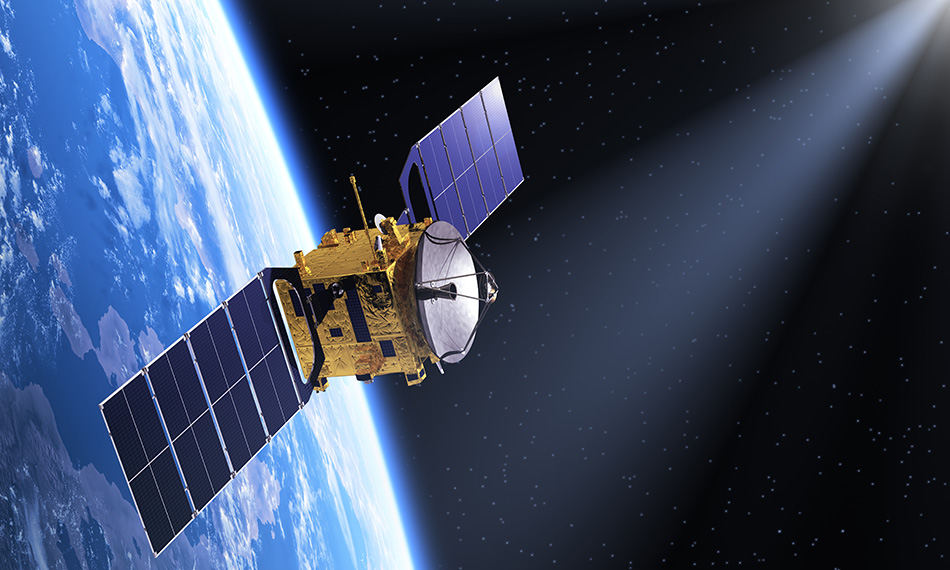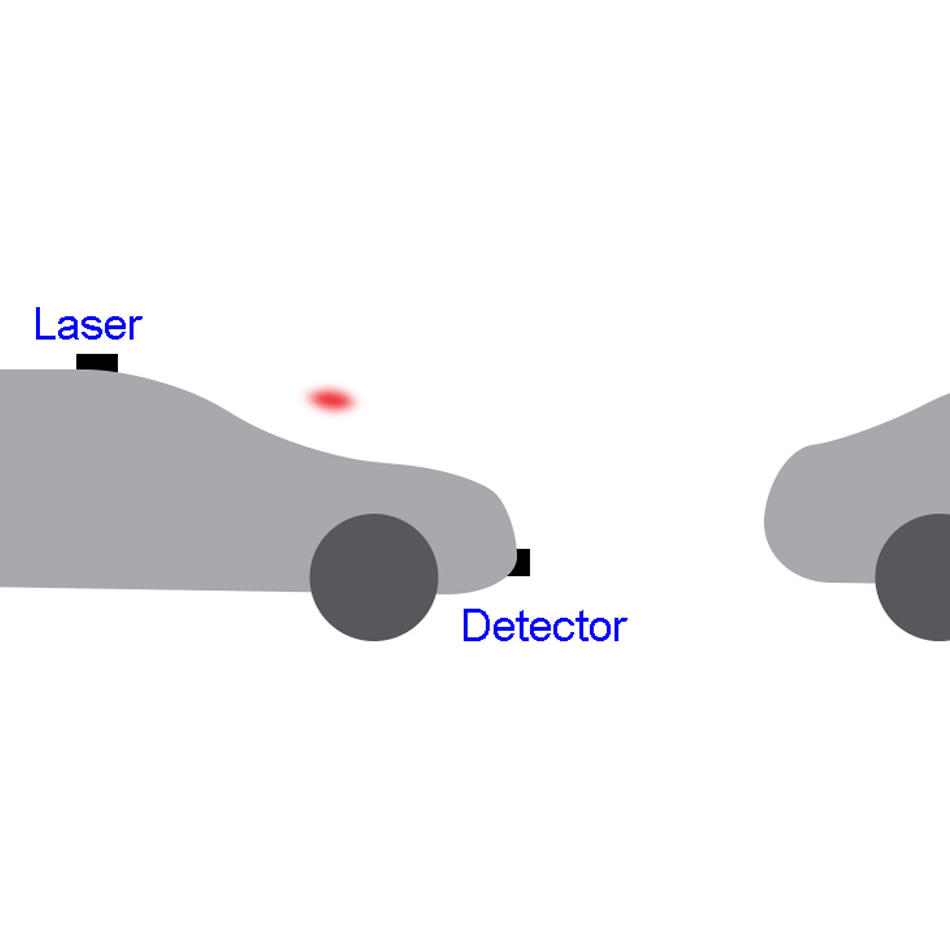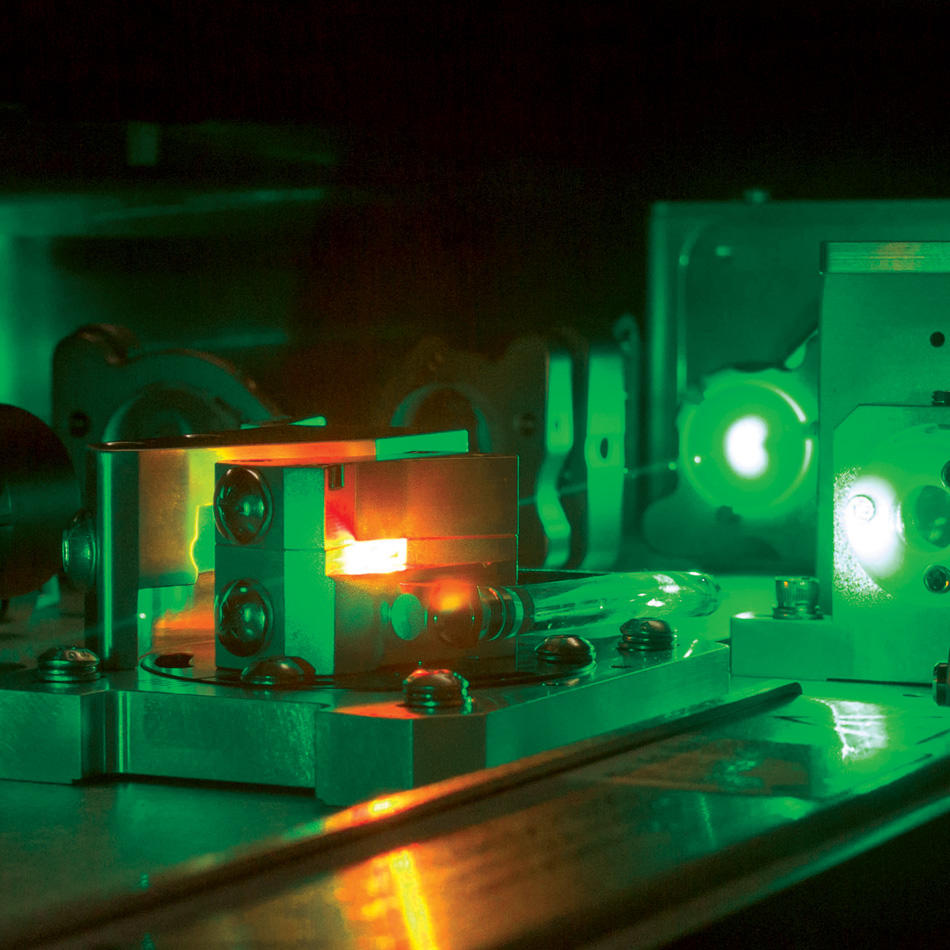Gain a Lot with Active Fibers
The newest active optical fibers from Coherent deliver advantages especially for applications in SATCOM and LIDAR.
October 7, 2021 by Coherent

Most optical fibers operate kind of like water pipes. Namely, you put light in one end, it travels some distance through the fiber, and then the same amount of light (or less) comes out the other end. But, you don’t get more light coming out than you put in to begin with.
Those are called “passive fibers.” But, there is another class of optical fibers – active fibers – that actually increase, or amplify, light. So, more light comes out than is put in to begin with. How is this possible?
The Dopest Fibers
The way it’s done is by “doping.” This means incorporating small amounts of chemicals, usually ions of rare earth elements (like Erbium, Ytterbium or Thulium), into the fiber itself. These ions absorb light at one wavelength and then re-emit it at another.
The drawing shows a highly simplified representation of how an active fiber is used to make a “fiber amplifier” – a device for amplifying laser light. “Seed light” from a relatively low power diode laser is coupled into a passive fiber. Light from pump diode laser sources (at a shorter wavelength than the seed laser) is also coupled into the fiber. All this light enters the active fiber where the dopant absorbs the pump diode light and then re-emits it at the seed laser wavelength. And, most importantly, this re-emitted light is coherent with the seed light – this means it’s laser light that’s identical in every way to the seed laser light.

Thus, more light at the seed laser wavelength comes out of the fiber than went in at the beginning. It’s quite possible to increase the amount of light by 1000 fold using this approach. Multiple stages are often combined to achieve even higher levels of gain.
Active Fibers – The Road to Success
Doped fibers with “gain” (optical amplification) are the basis of fiber lasers and fiber amplifiers. These technologies are themselves used in numerous fields ranging from materials processing, telecommunications, medicine/surgery, and sensing, and a variety of defense and aerospace applications.
One important developing application for fiber amplifiers is LIDAR (light detection and ranging) systems for autonomous vehicles and advanced driver assistance systems. In both of these, the LIDAR enables the car to “see” the road and environment.
For automotive uses, the advantage of LIDAR based on a 1550 nm fiber amplifier is that it delivers a relatively high level of laser power in a compact, lightweight package. More laser power is useful because it allows vehicles to “see” farther and better. But, even a fairly high power 1550 nm laser is “eyesafe” (meaning the laser light doesn’t reach the retina), so it poses no danger to other drivers. And, of course, size and weight are always important considerations in a vehicle.
Another significant developing application for 1550 nm fiber amplifiers is satellite communications. A number of both established and developing satellite communications companies have expressed interest in launching thousands of small, relatively inexpensive satellites into so called “constellations” in low Earth orbit. These constellations could provide internet service and other high speed communications services.
These numerous satellites need a way to communicate with each other, and lasers can be used to do this very effectively. This is because their light is transmitted with very little loss or distortion in the void of space. Also, laser-based links aren’t subject to the kind of interference that radio frequency communications can suffer from. Once again, the favorable size to weight ratio and overall electrical efficiency of 1550 nm fiber amplifiers makes them a great choice for this application.
Coherent is an Active Fiber Expert
Coherent manufactures an extensive range of active optical fibers, and recently introduced new products specifically intended for the satellite communications and automotive LIDAR systems just described. While these might seem very different uses, they actually share several common requirements, most specifically the need for compact, lightweight, and electrically efficient, yet powerful, laser sources. Plus, both involve harsh environments where either heat or radiation can degrade performance over time. Additionally, utilizing the same fiber for both applications increases production volumes which lowers the cost.
The new Coherent NuEYDF series Erbium-Ytterbium co-doped active fibers offer a combination of features that make them unique in the current market. These include:
- Radiation resistance which is essential for space applications
- Coatings that enable reliable operation and long lifetime in high temperature automotive applications
- Minimized ASE (amplified spontaneous emission) for maximum gain, reduced noise and extended lifetime
- Matched passive fibers for maximum total system throughput
Coherent offers over 400 different types of passive and active fibers, for applications ranging from communications, sensing, inertial navigation, and surgery, through materials processing. And, most are available for immediate shipment. Visit our online store to see what’s available now.
Related Resources


